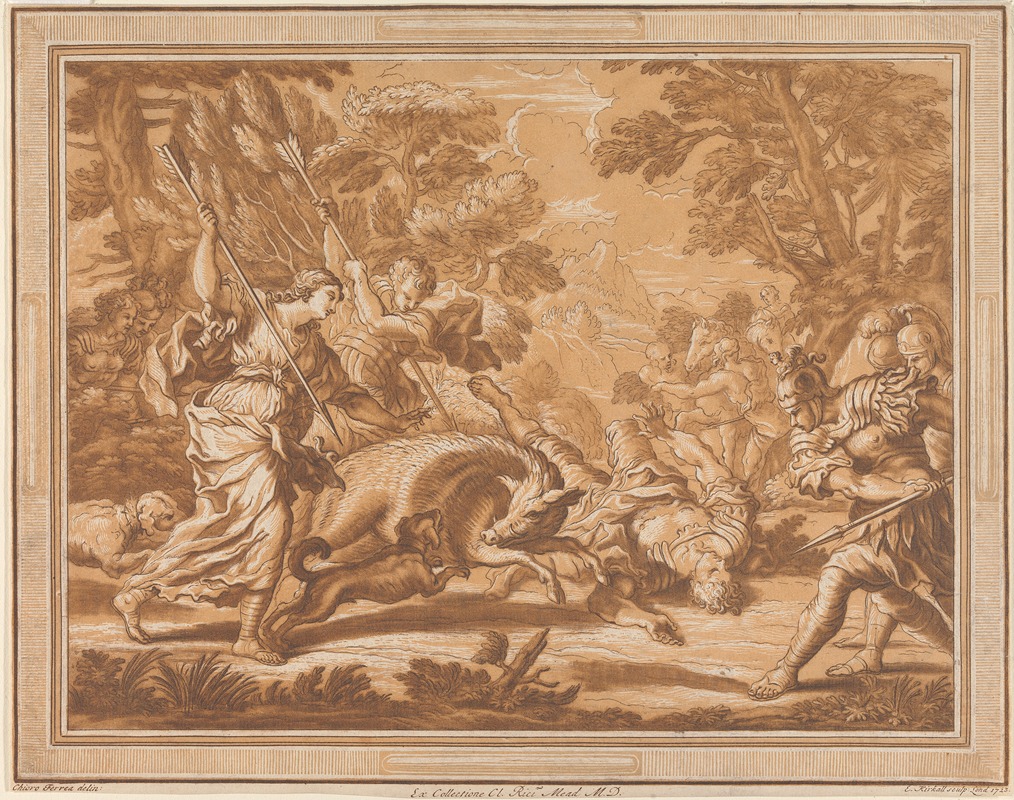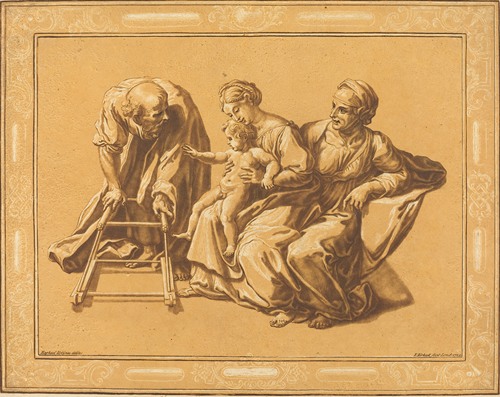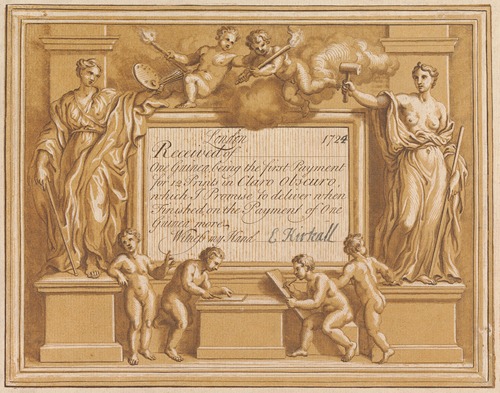
Elisha Kirkall was a prolific English engraver, who made many experiments in printmaking techniques. He was noted for engravings on type metal that could be set up with letterpress for book illustrations, and was also known as a mezzotint artist.
Born in Sheffield, Kirkall was son of a locksmith. Around 1702 he came to London, and found employment in the book trade. He also studied drawing at Great Queen Street Academy.
Kirkall married early in life, to Elizabeth; a second wife was called Deborah. He died in Whitefriars in December 1742, leaving a son, Charles, then aged about 22.
As a book illustrator, Kirkall used etching and metalcut, with line engraving as "white line". From his first times in London, book ornaments he provided as raised metal proved very popular with publishers. In the 1720s he innovated with use of the mezzotint rocker tool to simulate chiaroscuro. A reputation for wood engraving was apparently based on misapprehensions, and the attribution to him of woodcuts in Samuel Croxall's edition of Æsop's Fables (1722) was guesswork.



